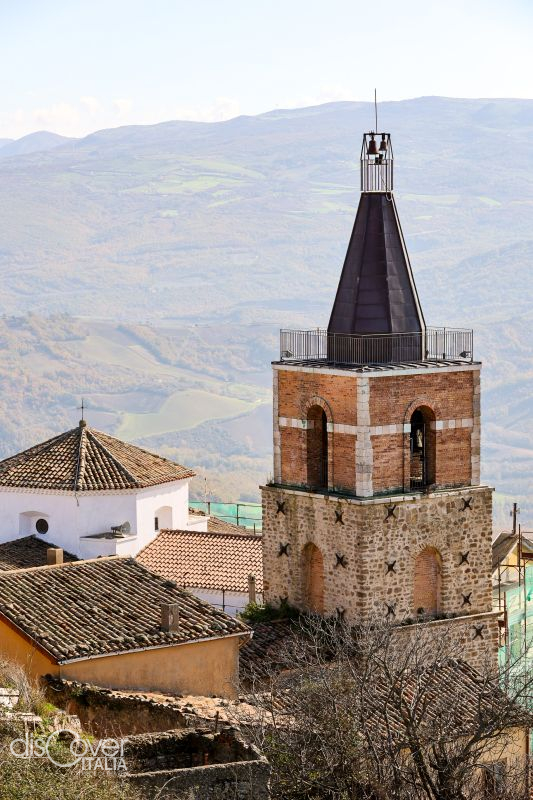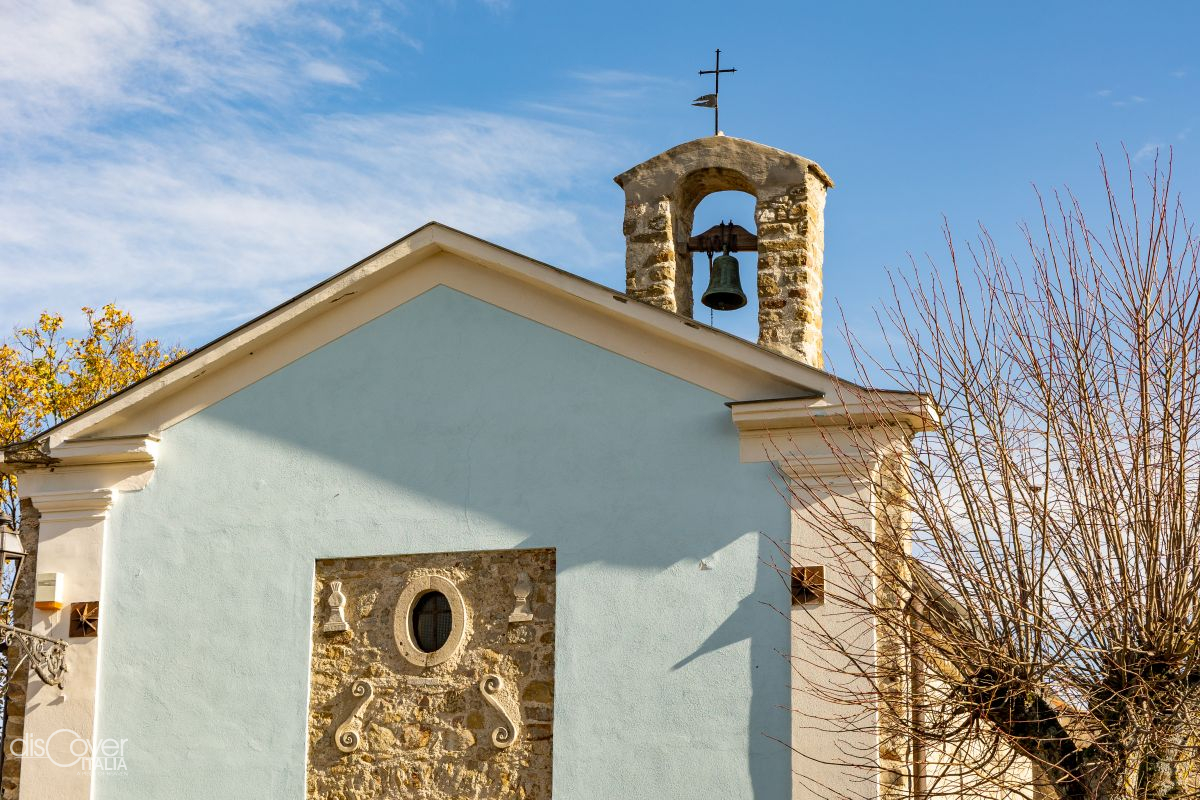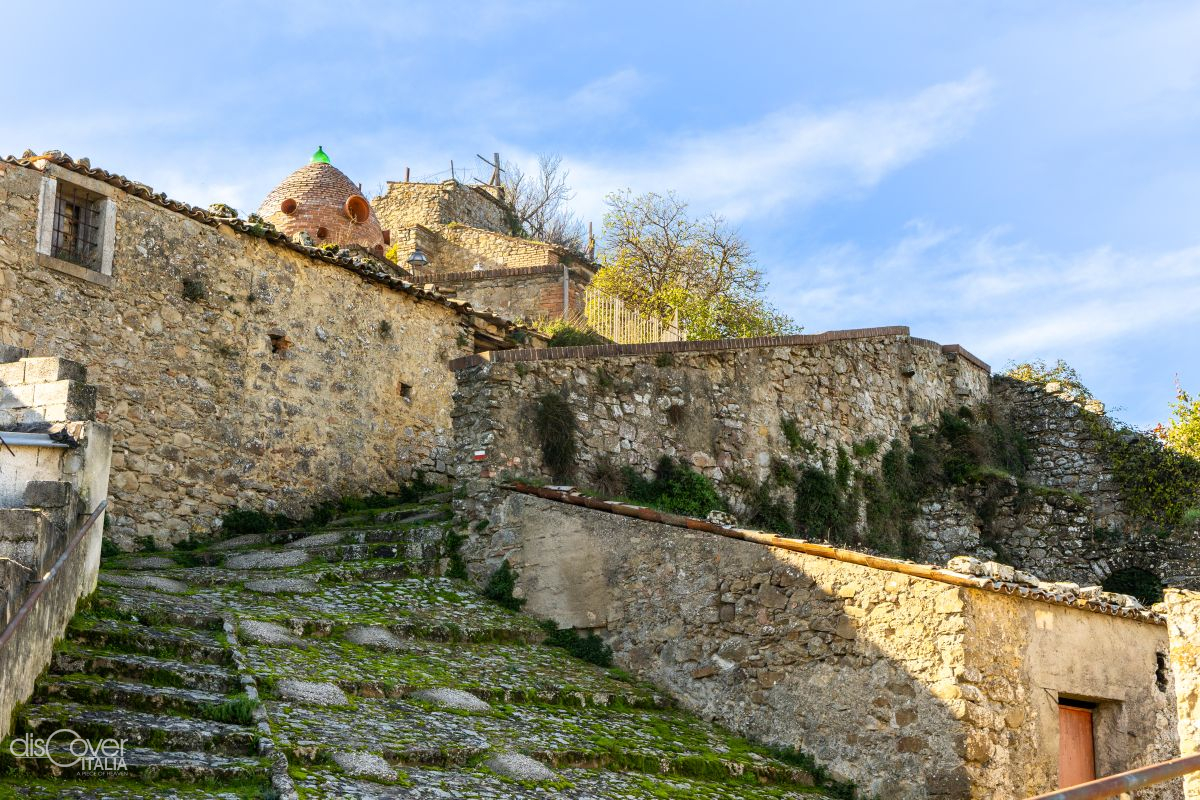A small town. With its name linked forever to an ancient culture that can be traced to a historical emigration from the lands on the Adriatic to those found on the paths towards the Tyrrhenian.

Historical courses and appeals, for reasons very similar to those that prompted many foreigners to found the archaic settlement on the hill today called Calvario, in the last century Cairano started to say good bye to its children who moved elsewhere. And in a few decades he found himself with a handful of inhabitants, guarding the stones, the memory and a territory that can now finally return to welcome again.
For the experts it is the Fossakultur of Cairano-Oliveto Citra. Name borrowed from the necropolis in Vignale where in 1967, the oldest pit tombs in Campania were discovered, dating back to a period between the beginning of the 9th and the first half of the 6th century BC. Witnesses of the presence in the early Iron Age, between the Ofanto and Sele valleys, of a population that had arrived from the other side of the Apennines, going up the course of the Ofanto. Those very particular tombs contained twentyfour funerary kits with objects demonstrating the great skill of those people in metalworking. In particular, bronze helmets, razors, knives and eyeglass and leech fibulae absolutely unique. All these artifacts are now kept at the Museo Irpino of Avellino. A few years later, the Calvario high ground gave back, with other pit tombs, traces of a town, suddenly abandoned in the 5th century, on a part of which a Lucanian settlement later arose.
The characteristics of this cliff overlooking the valley of the great river attracted the Romans, who stationed a military garrison there to defend the important city of Compsa. And the current name, Cairano, is linked to that era, perhaps originating from Car Janus, Mount of Giano, or identifiable with the Castellum Carissanum mentioned by Pliny the Elder in his Historia naturalis. In any case, it was from the first century BC when the events of Cairano began to be connected to those of the nearby Conza. The Goths took possession of the castle of Carissano in 555, when they occupied Conza, and they were then drove away from the Byzantine general Narsete. It was the longobards to build the castle, which was then completely renovated in the Norman era, which fascinating ruins remain on the highest part of the cliff today.


Taking advantage of the hill natural defense and the excellent sighting position on the valley, the medieval town was formed all around the fortress, of which the current village retains the main characteristics, despite the many vicissitudes it has endured over the centuries. However, the first documented references if Cairano are "only" from 1585, in Vatican documents. At that time the fortress on the hill was still a precious bulwark of the Conza fief, a role it retained until 1676, when Cairano became an autonomous fief, remaining so until the early 19th century.
The suggestive hamlet socketed on the top of the hill has been composed and recomposed over the time with the civil and religious buildings made with local stone, also present the alleys and the square.
The mother church of Cairano, dedicated to San Martino Vescovo, houses valuable works of the 18th century, including a Madonna with Child. Further behindhand from the sacred building, a bell tower rises above the roofs of the hamlet, which perhaps was originally a civic tower. With its stone portal and wall clock, the 19th century church of the Immaculate Conception stands out from the beautiful altar of polychrome marble. The chapel dedicated to San Leone Magno, dates back to 1727.

To the characteristic hamlet on the surface corresponds an underground reality also very interesting. The caves transformed into cellars over the centuries are absolutely worth visiting.
A town with a long and illustrious history, which in various eras also knew phases of well-being, thanks to the fertility of the valley below, allowing the cultivation of wheat, excellent wine grapes and legumes. After the Second World War, however, an uninterrupted depopulation began, that led to only a few hundred souls. But the beauty of the village and what nature offers arounds it are making a rebirth possible, making Cairano a jewel not to be missed in an ideal journey to discover the land of the Irpinian people today.




Comments powered by CComment